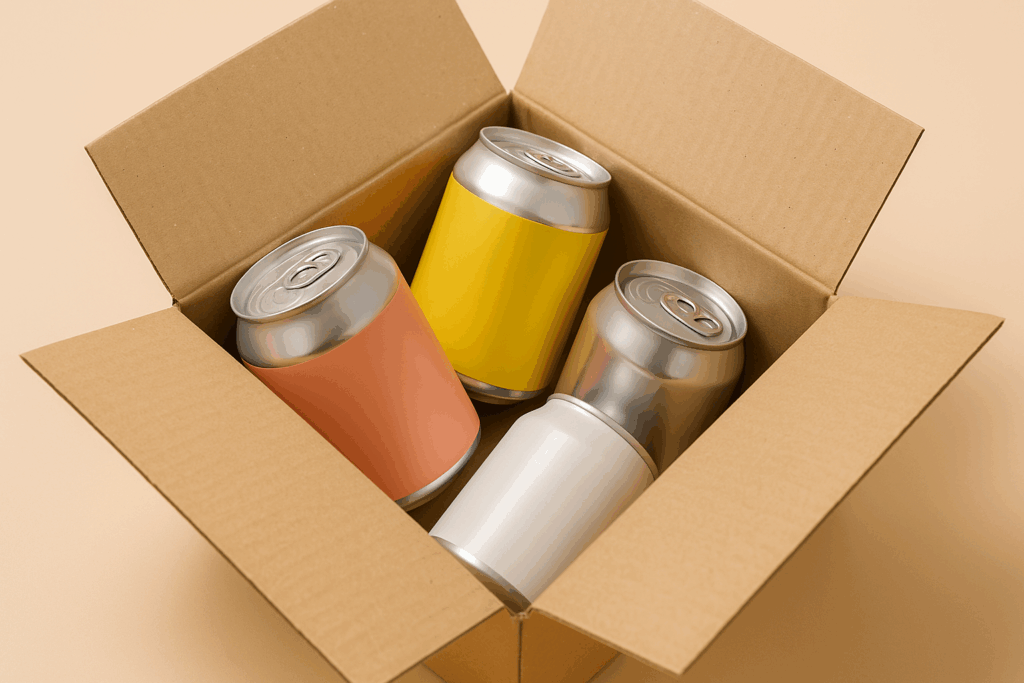Food and beverage marketing is an essential element for branding since it directs consumers to your brand. An effective marketing plan raises awareness and creates better first impressions, it can also increase sales, market share and even double your revenue in a single year if done correctly. This blog will cover food and beverage marketing strategies that deliver results.
Sharing Content on Social Media
Social media is a powerful tool for food and beverage brands that allows direct interaction with audiences and customers. To make the best results, brands should focus on the platforms where their customers are most active and post consistently.
Each social media platform has its own strengths, audiences and content styles. Choosing the right platform for your brand is about aligning your message with how people naturally engage there.
- Facebook: Facebook focuses on storytelling, customer testimonials, reviews and precise ad targeting to strengthen loyalty and engagement. This social media platform is best suited for food & beverage, lifestyle and local brands.
- TikTok: A creative and trend-driven approach that uses short-form video to capture attention and encourage virality. TikTok is an ideal platform for consumer, entertainment and food brands. TikTok marketing relies on authentic content, user-generated challenges and influencer collaborations to boost awareness.
- Instagram: The strategic use of visuals, reels and stories to position brands within lifestyle and aspirational contexts. Instagram emphasizes aesthetic content, influencer partnerships and e-commerce features like Instagram Shop to connect products with lifestyles.
- LinkedIn: A professional-focused platform aimed at establishing authority and credibility in B2B industries. LinkedIn highlights thought leadership, company updates, case studies, and expert insights to build professional trust and partnerships.
- X (Twitter): X leverages short updates, trending hashtags, polls and conversations to shape brand voice, deliver instant news and engage with communities in the moment.
For a deeper look at how social platforms can elevate your visibility, check out this guide on food and beverage brands and social media.
How Blogs Can Bring the Right Visitors to Your Website
One of the most effective ways to drive website traffic is through high-quality blog content. Well-crafted blogs not only improve visibility in search results but also help potential customers discover your brand when researching topics in your industry.
Your blog should deliver real value whether through expert insights, company updates or thoughtful analysis of market trends. By focusing on building trust and providing useful information, you position your brand as a credible resource.
Quick tips to strengthen your blog content:
- Incorporate SEO keywords that match what your audience is actively searching for.
- Use high-quality visuals to make your posts more engaging and memorable.
- Add relevant product or service links naturally to guide readers toward the next step.
Create Short-Form Videos That Get Noticed
Short-form videos are one of the most effective ways to capture attention on platforms like TikTok, Instagram, Facebook and YouTube. For food and beverage brands, these channels deliver high engagement which makes them ideal for reaching new audiences and increasing visibility.
When creating short-form videos, focus on producing concise and impactful clips that demonstrate how to use your products, share industry insights or address common mistakes. Every video should include a clear call to action whether that’s encouraging viewers to visit your website, try a product or interact with the post. Incorporating trending audio or viral challenges can boost visibility while adding captions ensures your message is accessible even without sound.
Collaborating with influencers or complementary brands can further amplify your presence. If partnerships aren’t an option, consistency is key by posting regularly and testing different formats to see what resonates best. For a deeper look at building a strong short-form video strategy for food and beverage brands, explore this guide by MAVRK Studio.
Use Reviews to Build Trust
Positive reviews can boost sales and help earn the trust of new customers. Ask happy customers for testimonials and respond to negative feedback by offering solutions. This shows you care about customer satisfaction and are willing to make things right.
Monitor what people are saying about your brand online by setting up tools like Google Alerts to track mentions and stay informed. It also helps to invest in PR efforts that improve your brand’s public image.
Don’t just gather good reviews but share them by post on your website and social media to build credibility. When issues come up, address them quickly and professionally to show that your brand listens and responds.
Use a Website That Converts Visitors Into Customers
Your website should make it easy for people to buy whether they’re on a phone or computer. Show clear product photos, highlight customer testimonials and explain the benefits of your products.
Write clear descriptions that answer common questions and keep the checkout process fast and simple. These details improve the user experience and encourage repeat visits.
Here are the best practices that you should follow:
- Add customer reviews on product pages.
- Use pop-ups to give first-time visitors discounts.
- Suggest related products that customers may want.
- Keep your site loading fast because slow sites lose sales.
- Test different layouts to find what works best.
Use Effective SEO Practices for Your Website
SEO is one of the most valuable long-term strategies for increasing brand visibility. By optimizing your website, you make it easier for potential customers to discover your products, blog posts and business through search engines like Google.
A strong method includes creating dedicated pages for products, bundles and collections while also using blogs to provide useful insights that establish your brand as a trusted authority.
To measure success and identify areas for improvement, tools such as Google Search Console and Google Analytics are essential for tracking performance, detecting issues and guiding data-driven adjustments.
When done effectively, SEO can reduce marketing costs and deliver stronger results over time. To maximize impact, here are 10 best practices every marketer should follow:
- Use Keywords Strategically: Incorporate relevant keywords naturally within your content.
- Craft a Unique Title Tag: Write titles that are clear, compelling and optimized for search.
- Structure with Heading Tags: Organize content using proper H1, H2 and H3 tags for readability and SEO.
- Submit an XML Sitemap: Help Google crawl and index your site more efficiently.
- Add Internal Links: Connect related pages to improve navigation and authority.
- Earn Quality Backlinks: Build credibility by securing links from reputable websites.
- Optimize Images: Use descriptive file names, alt text and compressed formats to boost performance.
- Publish Helpful Content: Focus on delivering information that addresses your audience’s needs.
- Enhance User Experience: Ensure fast load times, mobile-friendliness and intuitive navigation.
- Run Technical SEO Audits: Identify and resolve errors that could hinder search visibility.
Paid Social Media Advertising
Paid social leverages social media platforms to deliver advertising content directly to audiences most likely to be interested in your product or service. These ads can take many forms such as images, videos or carousels and are typically labeled with identifiers like “sponsored,” “promotion,” or “ad.”
For both small businesses and established brands, paid social campaigns are a powerful way to increase visibility, reach new customers and drive revenue growth. By tailoring content to the right audience, businesses can maximize return on investment while strengthening brand awareness.
Common types of paid social advertising include:
- Image Ads: Simple and effective, these ads combine a single photo with ad copy and a clear call to action.
- Video Ads: Use short or long-form videos to showcase products, explain features or tell your brand story.
- Native Ads: Blend seamlessly into a user’s feed, appearing like organic posts while still serving promotional goals.
- Influencer Collaborations: Partnering with a trusted influencer allows brands to tap into established audiences which often generates a strong engagement and measurable ROI.
Combine In-Person and Online Events
Events are a powerful way to connect with customers and many brands rank them among their most effective marketing channels. Use these opportunities to meet potential clients, partners or businesses that could benefit from your services.
Promote your events on social media, share photos and videos during and after, and follow up with attendees to gather feedback. Offering exclusive deals to event participants can also encourage loyalty and repeat business.
Why Food & Beverage Marketing Matters Today
Modern consumers are looking for products that are not only fresh and healthy but also environmentally responsible. Effective marketing ensures your brand stands out and captures attention from the very first interaction.
At MAVRK Studio, we help food and beverage brands develop strategies grounded in research and tailored to their unique goals. Using customer insights and data-driven analysis, we create actionable plans that drive measurable growth.
Contact us today to explore how our market research services can support your brand’s success.





